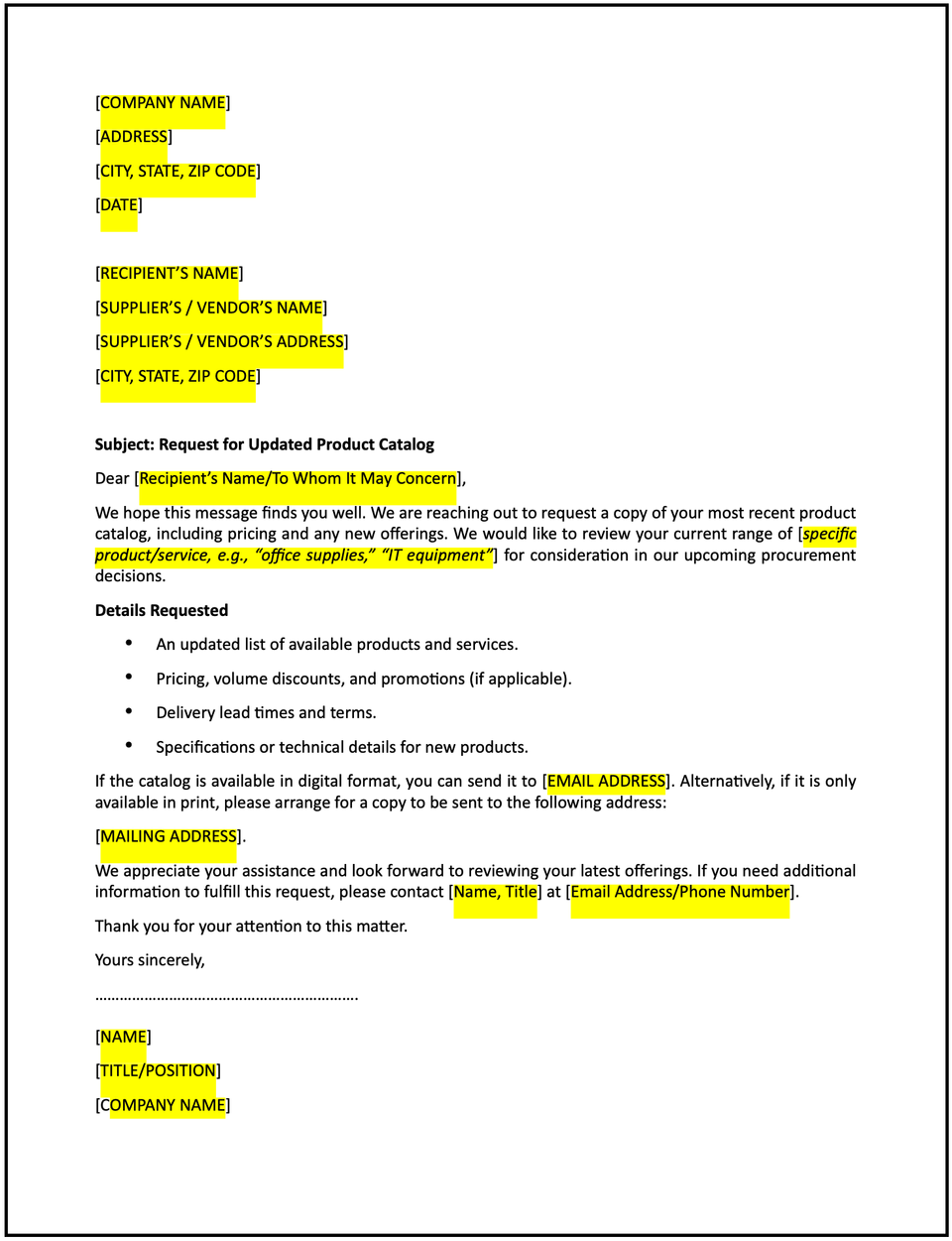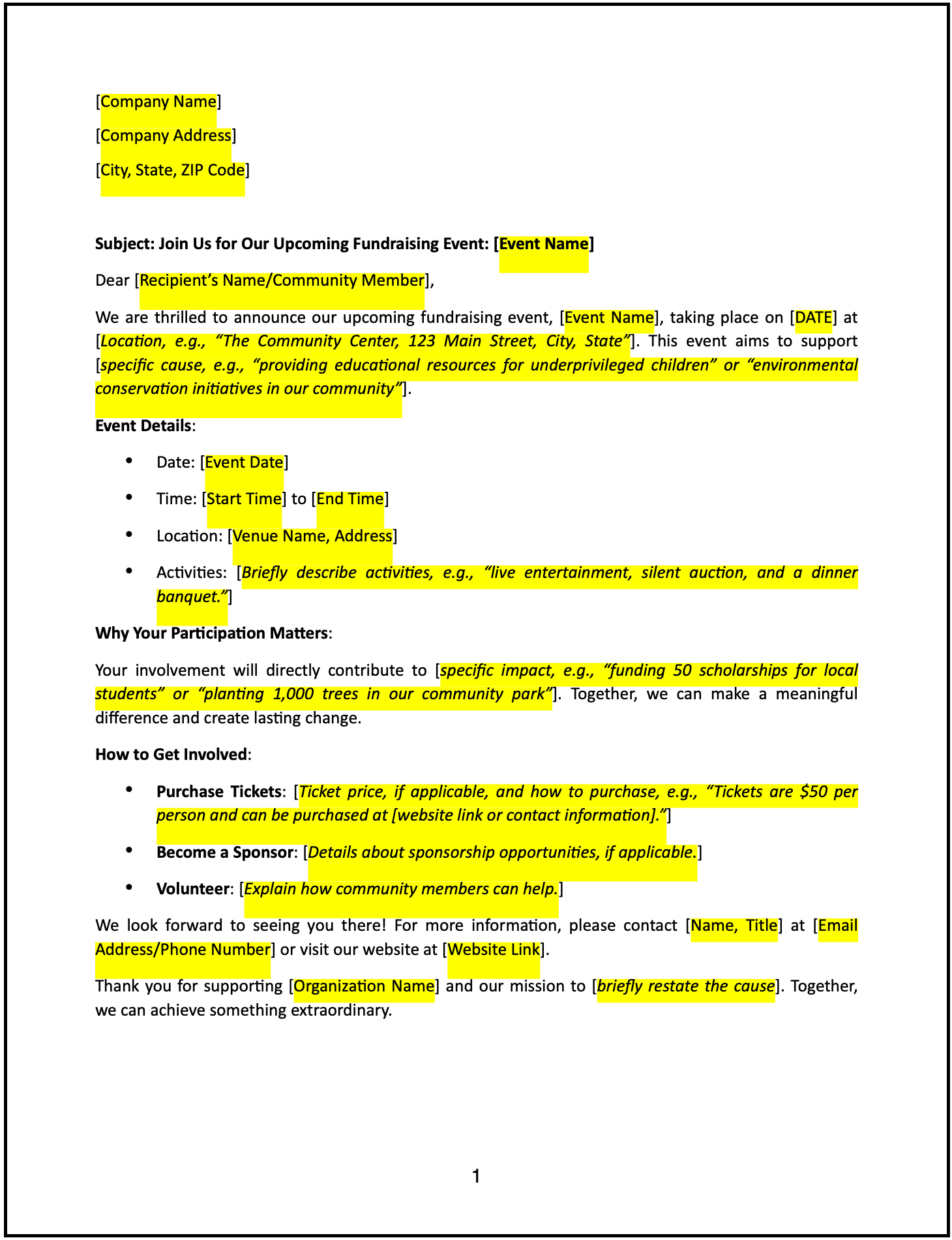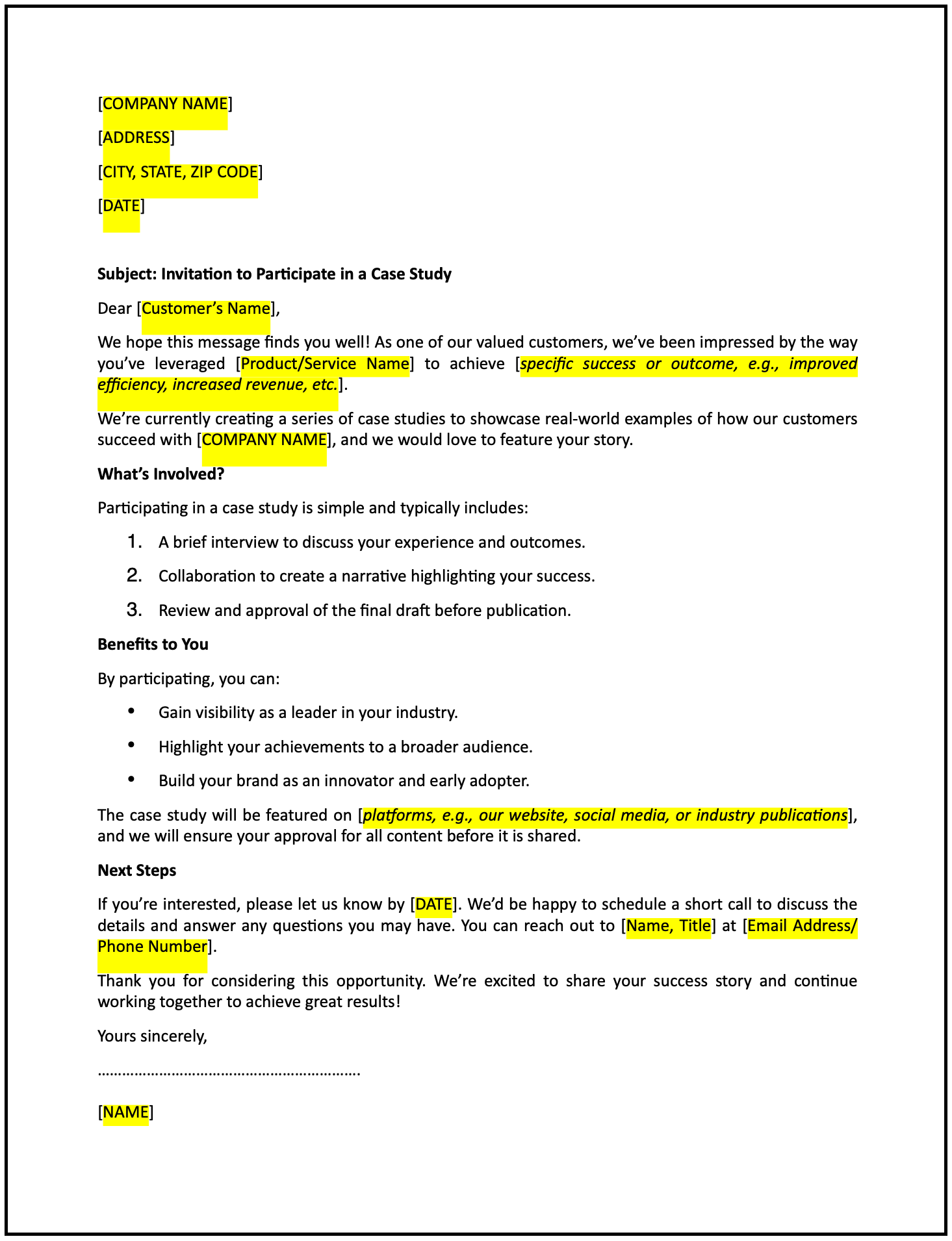Letter of request for an updated product catalog: Free template

Letter of request for an updated product catalog
A letter of request for an updated product catalog is a formal communication used to ask a supplier or vendor for the most recent version of their product offerings. This letter ensures you have up-to-date information for procurement, inventory, or business planning purposes.
How to use this letter of request for an updated product catalog
- Open with an introduction: Address the recipient respectfully and provide context for the request, referencing your ongoing relationship or interest in their offerings.
- State the purpose: Clearly communicate your request for the latest product catalog and explain its importance for your business needs.
- Specify the format: Indicate whether you prefer a physical copy, a digital file (e.g., PDF), or a link to an online catalog.
- Highlight urgency: If applicable, mention a specific timeline for when you need the catalog to plan your next steps.
- Include any additional details: If you’re seeking specific categories, pricing details, or availability information, make that clear.
- Maintain a professional tone: Ensure the letter is clear, respectful, and focused on fostering collaboration.
- Provide contact information: Include details for the recipient to share the catalog or reach out with questions.
Benefits of using a letter of request for an updated product catalog
This letter ensures a structured and professional way to obtain updated product information while fostering trust and collaboration. Here’s how it helps:
- Promotes clarity: Clearly requesting the latest catalog ensures you receive accurate and relevant information.
- Reflects professionalism: A well-crafted letter demonstrates respect and commitment to maintaining a strong relationship.
- Supports decision-making: Updated product details enable informed purchasing and planning.
- Encourages collaboration: Open communication fosters trust and engagement with the supplier.
- Saves time: Directly requesting the catalog streamlines the process of obtaining needed information.
Tips for writing an effective letter of request for an updated product catalog
- Be specific: Clearly state the type of catalog you need, such as a general product listing or a specialized category.
- Use professional language: Maintain a respectful and collaborative tone to encourage a prompt response.
- Provide context: Briefly explain why the updated catalog is important to your business needs.
- Highlight urgency: If applicable, mention a deadline to ensure timely delivery.
- Include actionable steps: Share clear instructions for providing the catalog, such as an email address or mailing address.
- Keep it concise: Focus on the key points while ensuring the tone is professional and engaging.
Frequently asked questions (FAQs)
Q: What details should I include in this letter?
A: Include the purpose of the request, preferred format, timeline for delivery, and any specific product categories or details needed.
Q: Should I personalize the letter?
A: Yes, addressing the recipient by name and referencing your relationship or past interactions demonstrates attentiveness.
Q: Who typically sends this letter?
A: Procurement managers, business owners, or purchasing teams typically send this letter.
Q: How formal should this letter be?
A: The tone should be professional and respectful, focusing on fostering collaboration.
Q: When should this letter be sent?
A: Send the letter when preparing for procurement cycles, updating inventory, or exploring new products.
Q: Can this letter request additional information alongside the catalog?
A: Yes, you can request supplementary details like pricing, availability, or technical specifications.
Q: Is acknowledgment from the recipient required?
A: While not mandatory, requesting acknowledgment ensures the supplier is addressing the request.
This article contains general legal information and does not contain legal advice. Cobrief is not a law firm or a substitute for an attorney or law firm. The law is complex and changes often. For legal advice, please ask a lawyer.


